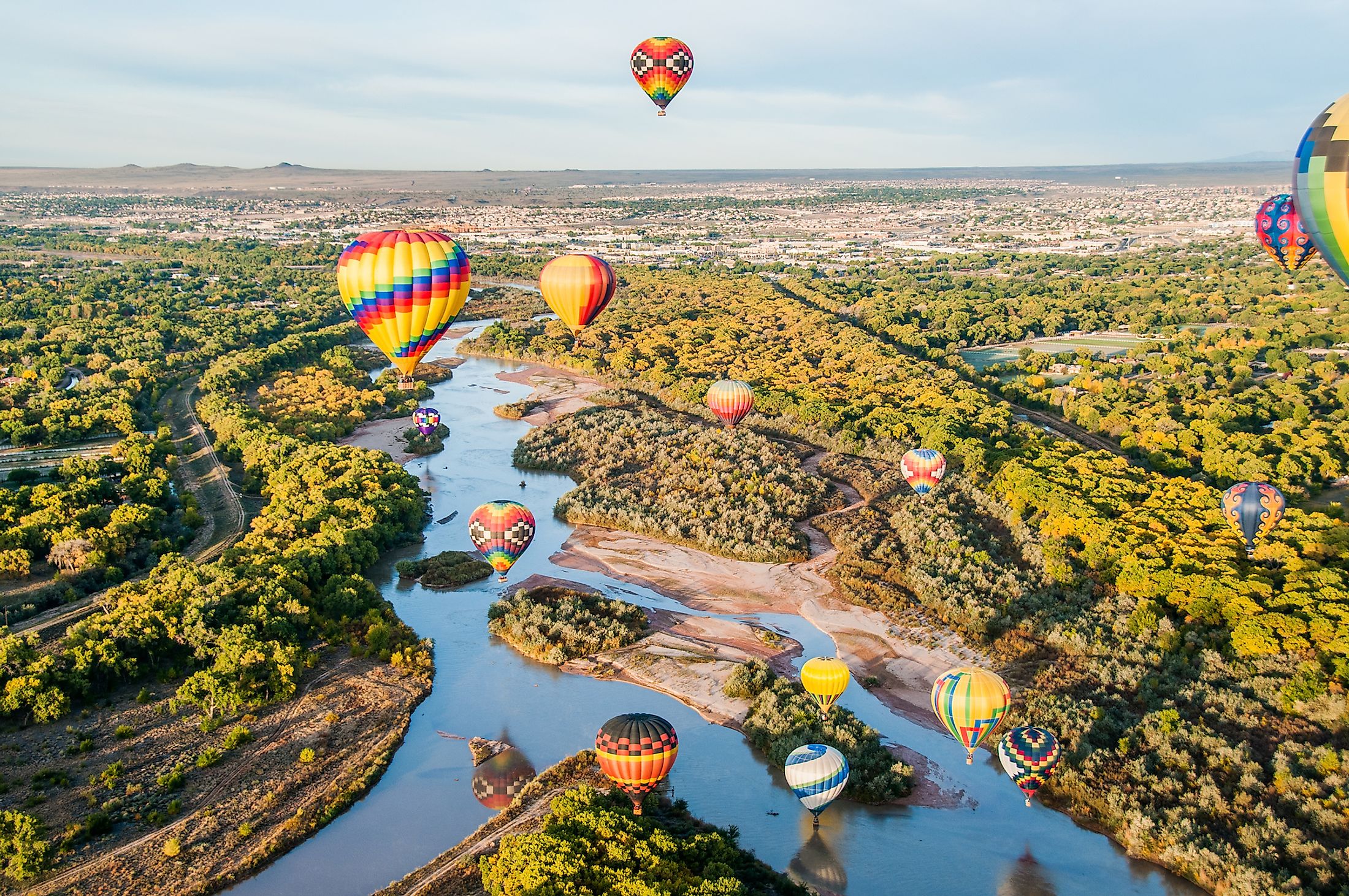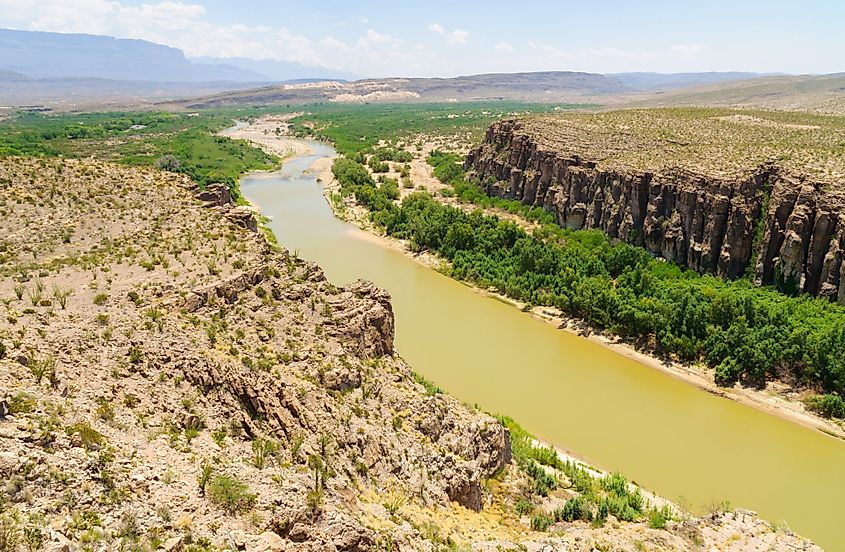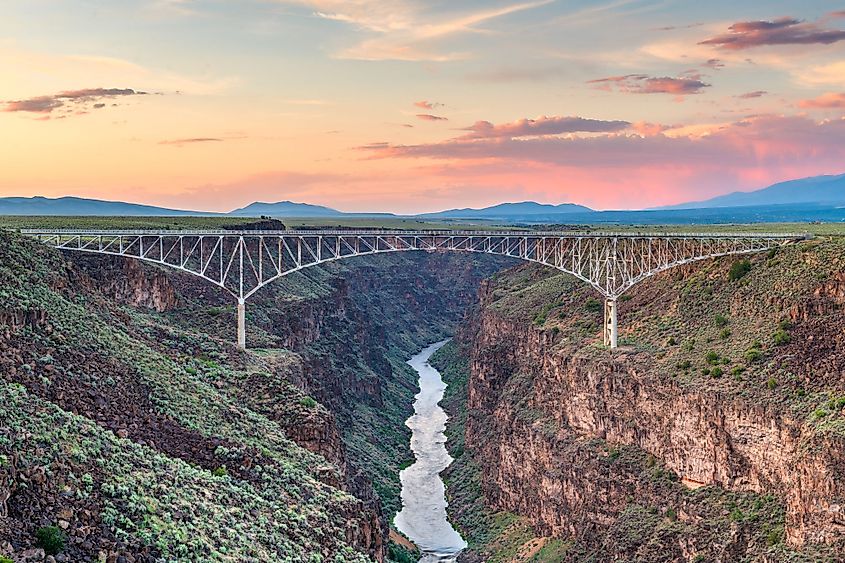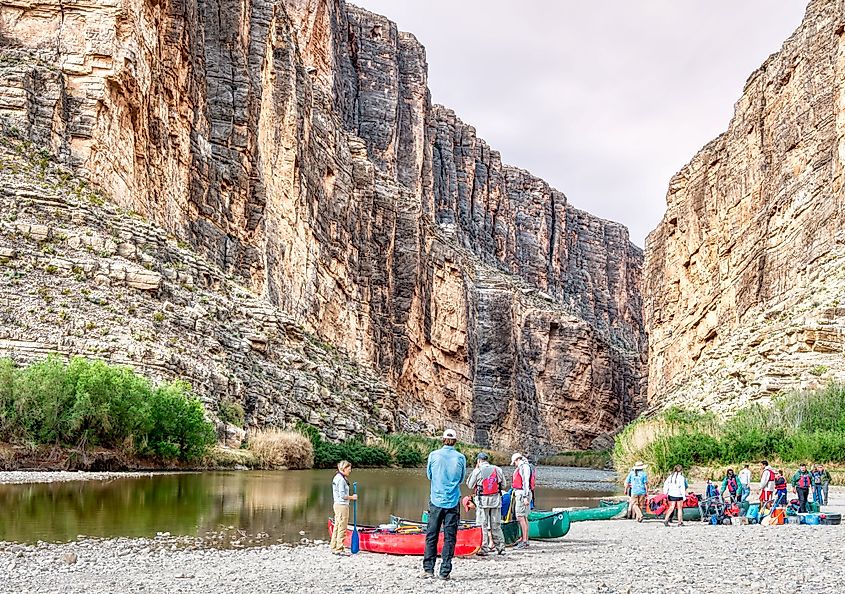
Rio Grande River
The Rio Grande River is a principal river in North America that forms part of the United States-Mexico border and serves as the border between Texas and four Mexican states of Tamaulipas, Coahuila, Nuevo Leon, and Chihuahua. In Mexico, the river goes by the name Rio Bravo del Norte. The Rio Grande is 3,051 kilometers long from its source at the Canby Mountain in Colorado to its mouth at the Gulf of Mexico. However, its length changes from time to time due to the shifting course.
Overview

The Rio Grande is North America’s 4th or 5th longest river, depending on how its length is measured. Although the river is considered to be 3,051 kilometers long, its length keeps changing due to the shifting course. However, the river drains approximately 472,000 square kilometers, including one US state and four Mexican states. The Rio Grande river basin and the adjacent river basins cover up to 870,000 square kilometers. The river discharges an average of 68 cubic meters of water per second and a maximum of 27,300 cubic meters per second. It rises from an elevation of 3,700 meters above sea level and drains into the Gulf of Mexico located at the sea level.
River Course and Tributaries

The principal source of Rio Grande is the Canby Mountain, which is part of the San Juan Mountains of the Colorado Rocky Mountains. Canby Mountain is located to the east of the Continental Divide. The river is formed by several streams rising from the Canby Mountain, with the streams converging to the west of Rio Grande National Park. Pole Creek is the Rio Grande's distant source.
From the headwaters in the Canby Mountain, Rio Grande flows southeastward through San Luis Valley, then turns southwards and cut through the White Rock Canyon and Rio Grande Gorge on its way to Middle Rio Grande Valley. The river continuous southwards to Espaniola in New Mexico and picks some of its waters from Rio Chama. From Espaniola, Rio Grande flows southwards through several desert cities, including Las Cruces and Albuquerque, then to El Paso, Texas. The Rio Grande flows through Colorado for about 280 kilometers and across New Mexico for about 780 kilometers.
Below El Paso, Texas, the Rio Grande flows on the US-Mexico border for about 1,431-2,008 kilometers. Here, it forms the boundary between Texas and four Mexican cities, including Tamaulipas, Coahuila, Nuevo Leon, and Chihuahua. In Ojinaga, Chihuahua, Rio Grande is joined by Rio Cocho on the right bank. Other rivers draining into the Rio Grande from the right include the Conejos River, Jemez River, Rio Salado, Rio Alamo, and San Juan River. On the left, the river receives water from the Red River, Embudo River, Pecos River, Alamito Creek, and Devil River. Rio Concho is Rio Grande’s largest tributary by discharge, contributing about 24 cubic meters of water per second.
The Rio Grande passes through three canyons before entering the Gulf Coastal Plain. The canyons are 460-540 meters deep and located in an area known as the “big bend,” where the river on the Texas side is part of the Big Bend National Park. For the remainder of its journey, the river meanders through the Gulf Coastal Plain and forms a fertile delta as it flows into the Gulf of Mexico.
Brief History
The Spanish naval expedition explored the mouth of several rivers in Mexico’s northeastern coast, including Rio Grande (Rio Bravo) in the early 16th century. In 1536, the Rio Grande River, alongside others, appeared on the maps of New Spain for the first time. In 1540, the Francisco Vasquez de Coronado-led expedition traveled on Rio Bravo and reached Tiwa pueblos.
In the 1830s-40s, the Mexico-Texas border in the Rio Grande became a source dispute between Mexico and the Republic of Texas. In 1846, the US took advantage of the conflict to invade Mexico. However, the dispute was later resolved, with the river marking the boundary between Mexico and the United States since 1848. In 1905, the federal legislators divided Rio Grande’s water between Texas and Mexico based on the irrigable land in each state. The Rio Grande Project also allowed Mexico to use 74 million cubic meters of water annually.
In the 1920s and 1930s, New Mexico and Texas were involved in a tussle over the use of Rio Grande, culminating in the 1938 Rio Grande Compact. Mexico and the US also signed an agreement on the use of the river in 1944. However, Texas and New Mexico are calling for the reexamination of the treaty because of the frequent droughts, especially in the 21st century. In 1997, the Rio Grande was designated an American Heritage River.
Economic Significance

The Rio Grande has supported irrigation since prehistoric times, especially among the Pueblo Indians. However, increased population and high water demand necessitated the treaties and agreements in the first half of the 20th century among the US states and between the US and Mexico. The river is a water source for about 850,000 hectares, with the crops varying from cotton to alfalfa, potatoes, grapes, and citrus fruit. The major reservoirs in the Rio Grande Basin include Lake Toronto, Falcon Reservoir, Elephant Butte, Amistad Dam, and El Azucar Dam. Some of these reservoirs support the production of large amounts of hydropower. However, several irrigation diversions and reservoirs have affected the flow of the river and the amount of water reaching the Gulf of Mexico.











